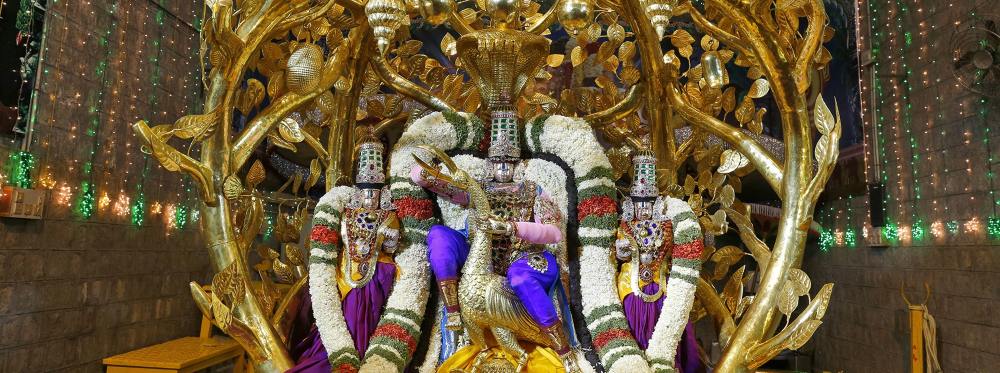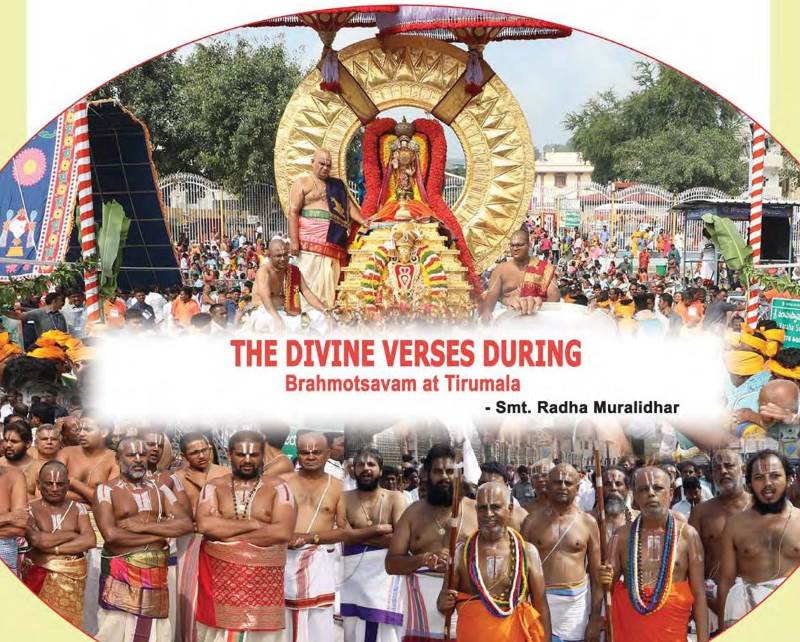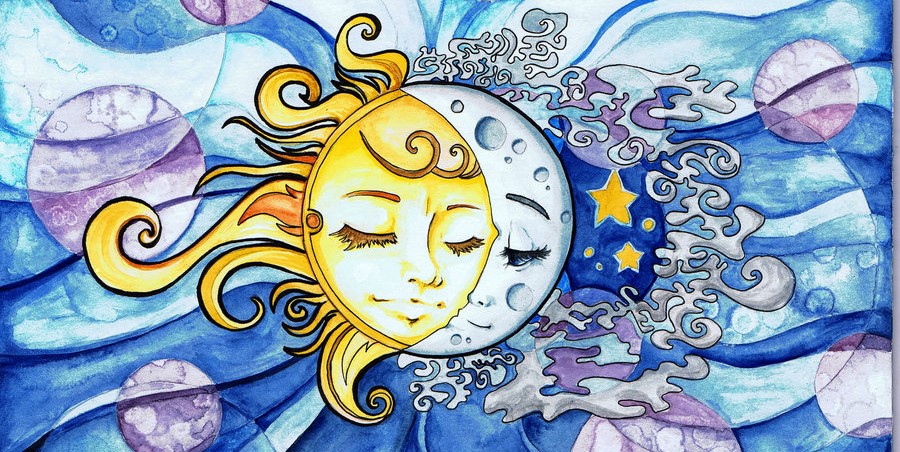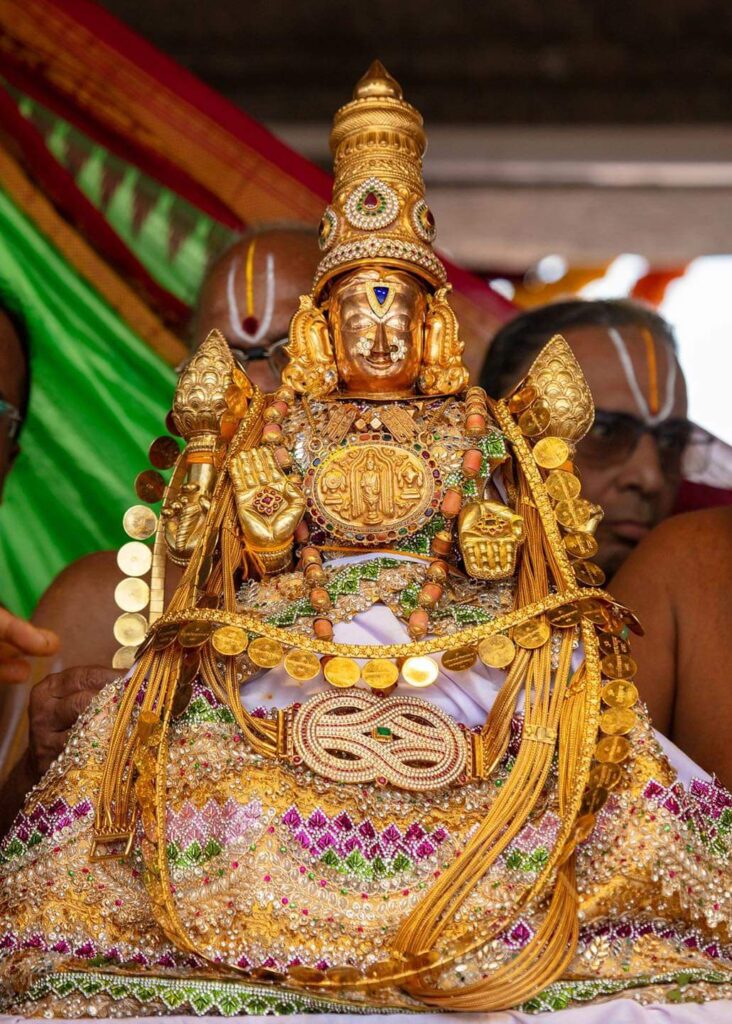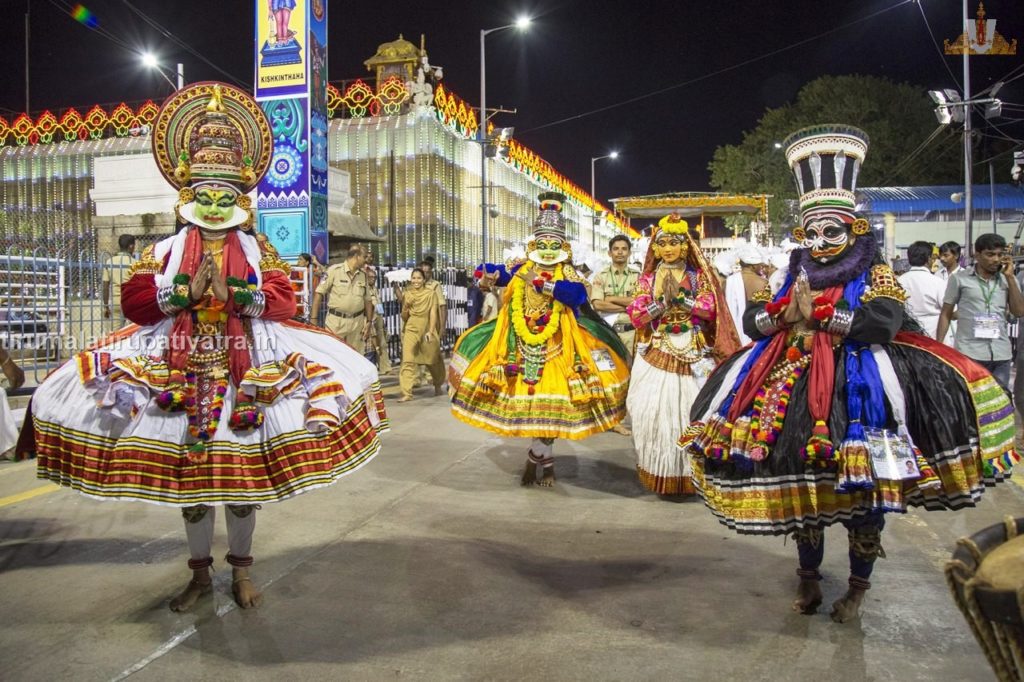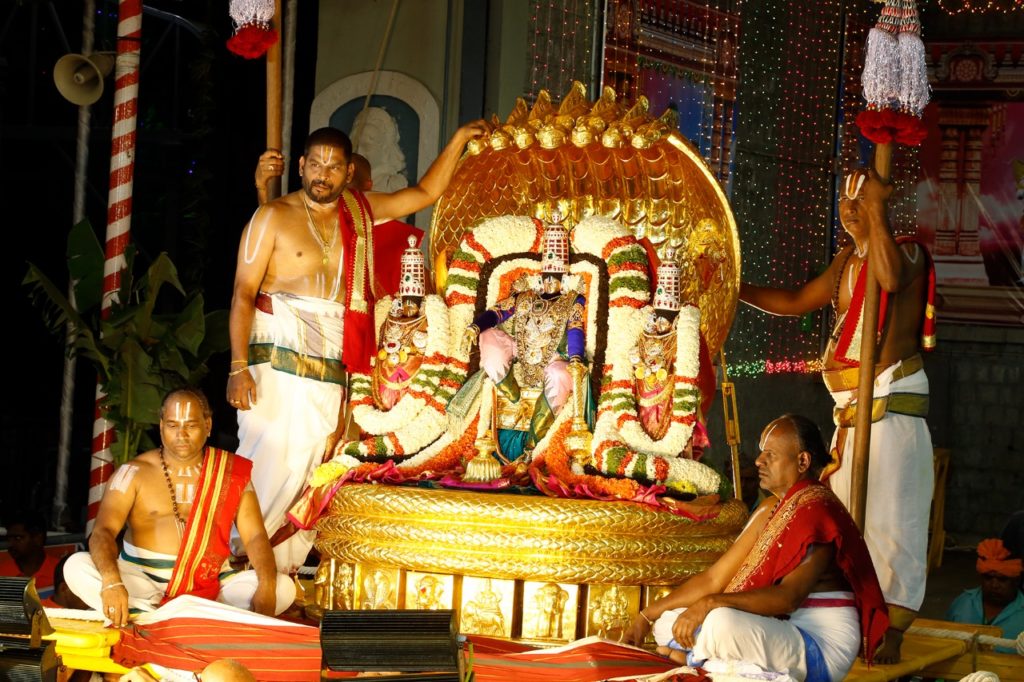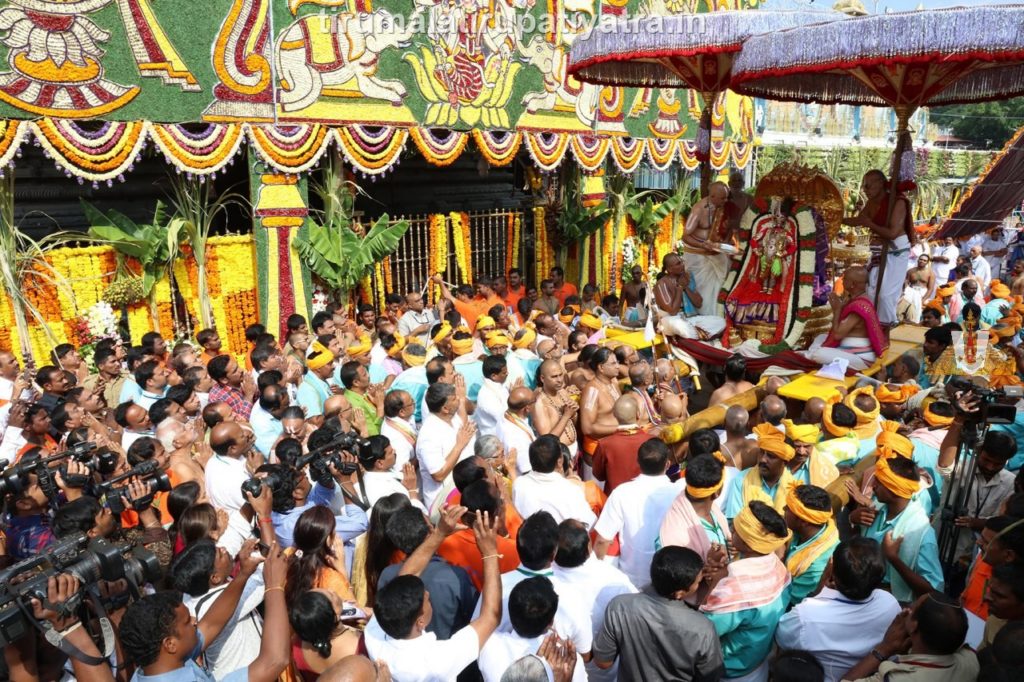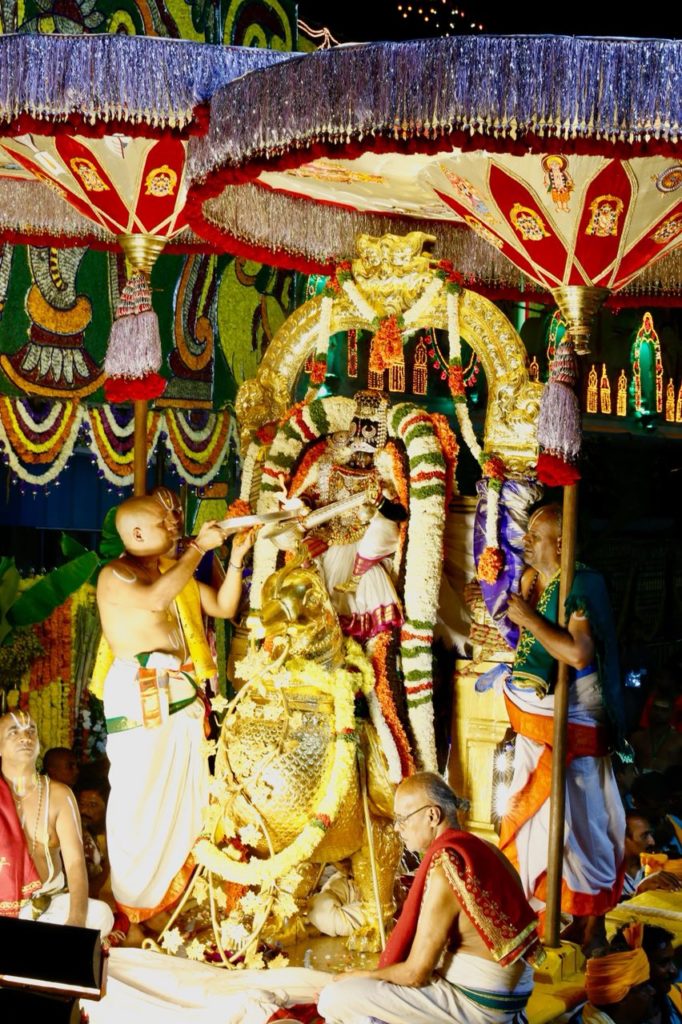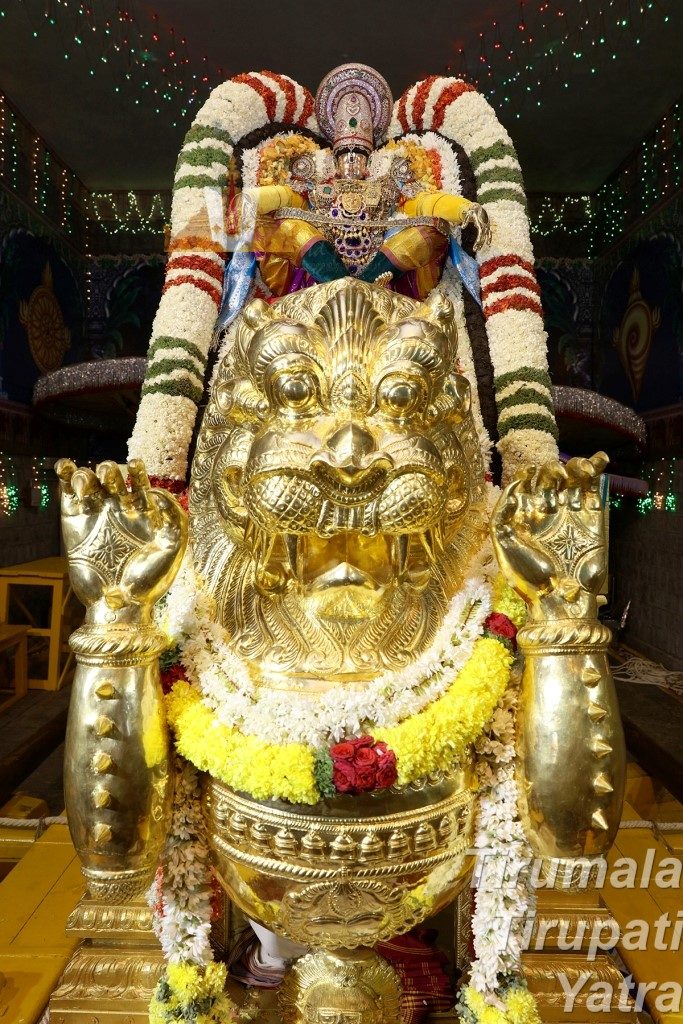Sri Padmavati Ammavaru Brahmotsavams 2024 Tiruchanur, the divine domain of Goddess Sri Padmavati Ammavaru, is one of the highly exalted places in Andhra Pradesh. The temple of Sri Padmavati Ammavaru is situated 5 km from Tirupati town and is exclusively dedicated to Sri Padmavati Ammavaru, the consort of Lord Sri Venkateswara. Tiruchanur Sri Padmavathi Ammavari Read More
Tag: brahmotsavams
Although many utsavas are conducted for the Lord throughout the year, the brahmotsavams which take place for nine days a year assume greatest prominence in the history of Tirumala.
Brahmotsavams 2024 – The Festival Performed by Lord Brahma
Srivari Brahmotsavams 2024 The celebration of Srivari Brahmotsavams is the grandest spectacle of the year. Hundreds of thousands congregate at Tirumala to have the grand darshan of Lord Venkateswara as He moves around the streets on a different mount each morning and evening for nine days. Filled with excitement and devotion, the atmosphere is charged. Read More
Divine Verses (4000) During Brahmotsavams at Tirumala
4000 Divine Verses Srivari Brahmotsavams Srivari Brahmotsavams of this year will be celebrated between 4th October and 12th October 2024. The holy Thiru Vengadam Hills, perhaps the most famous place of pilgrimage, always carries a festive atmosphere with the crowds pouring in from all parts of the world and this vast land of ours. To Read More
Adhika Masa – The Extra Month
Annual Brahmotsavas – Adhika Masa Today, the annual Brahmotsavas in Tirumala is celebrated for nine days during the month of Kanya. But, whenever there is an extra month as per the Chandramana, two Brahmotsavas are celebrated. It is an established tradition to hold the festival, having fixed the Avabritha on the day with Sravana nakshatra Read More
Glory of Divine Mother – Tiruchanur
The Glory of the DIVINE MOTHER Sriman Narayana, the Almighty manifests Himself in five distinct forms namely the Param, Vyuham, Vibhavam, Antaryami and Archa. In all these forms the Lord is always inseparably united with His divine consort Sri Mahalakshmi. The Parabrahamam is identified only by the presence of the “Sri”, the Divine Mother. The Read More
Cultural and Folk Arts – Brahmotsavams
Brahmotsavam – A Festival organized by Brahma According to some of the Epic Sources, it is on the day of Lord Sri Venkateswara’s Self Manifestation on the Tirumala Hills that his son BRAHMA was called by HIM and asked to celebrate a festival in memory of His Manifestation Day. Ever since this festival has been Read More
Pedda Sesha Vahana Seva 2018
There is one ceremony or the other almost daily for Lord Venkateswara manifest on Tirumala. Different ceremonies are conducted on a grand scale for the Lord with different time frames— daily, fortnightly, monthly and yearly. Of them, special mention may be made of annual Brahmotsavas. Devotees go on raptures witnessing the Lord on different carriages Read More
Chinna Sesha Vahana Seva 2018
There is one ceremony or the other almost daily for Lord Venkateswara manifest on Tirumala. Different ceremonies are conducted on a grand scale for the Lord with different time frames— daily, fortnightly, monthly and yearly. Of them, special mention may be made of annual Brahmotsavas. Devotees go on raptures witnessing the Lord on different carriages Read More
Hamsa Vahana Seva 2018
There is one ceremony or the other almost daily for Lord Venkateswara manifest on Tirumala. Different ceremonies are conducted on a grand scale for the Lord with different time frames— daily, fortnightly, monthly and yearly. Of them, special mention may be made of annual Brahmotsavas. Devotees go on raptures witnessing the Lord on different carriages Read More
Simha Vahana Seva 2018
There is one ceremony or the other almost daily for Lord Venkateswara manifest on Tirumala. Different ceremonies are conducted on a grand scale for the Lord with different time frames— daily, fortnightly, monthly and yearly. Of them, special mention may be made of annual Brahmotsavas. Devotees go on raptures witnessing the Lord on different carriages Read More
